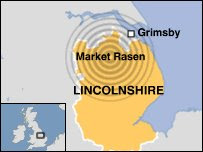
1 The difference between a habitat and a
biome is all about SCALE (and complexity of structure, number of food chains, biomass...).
2 Primary Productivity is the
amount of new tissue growth (measured in g/m2/year) - it is not the energy produced.
3(i) Look for overall trends as well as referring to specific figures and identifying anomalies.
4(i) You have simply got to sit down and learn diagrams such as this - know your stores and your transfers BUT remember to read the question so that you know which ones the examiners are asking about.
4(ii) READ THE QUESTION!! The output from the soil is
leaching; the output from the litter is
run-off...so clearly this question wants you to start by thinking about these two (and then moving on to thoughts about management by humans [harvesting, grazing etc.]).
5(i) You must pick up the straightforward marks...
5(ii) This question asked you to make reference from the graph (describe) and use your own knowledge (give reasons). With regard to the former, state "mass greatly reduced at each level - 8009, 120g, 10g etc; with regard to the latter, refer to 90% loss at each stage, energy lost as a result of respiration, movement, excretion etc.
6(a) You won't find four easier marks but you will never get them unless you
learn key definitions. Ensure that you refer to the
time factor when referring to succession and include
examples as part of your definition of both key terms.
6(b)
Describe:
Number of Species - rapid increase then decline (state
specific figures to get more marks).
Rate of Growth - two rapid phases with slower (plateau) periods.
Biomass - steady then rapid increase (20-100 years) then slows.
Explain:
Number of Species - increasing diversity as conditions become less extreme (milder
microclimate, better soils etc.). Shading out of species from 50 years onwards
. Rate of Growth - reflects plant number/density, height, layering - i.e. rapid colonisation and stability of initial species, then colonisation by bushes and trees
. Biomass - reflects number, density and type of species as conditions change.
7
Human arresting factors: deforestation, afforestation, agriculture (arable and pastoral), forest fires.
Natural arresting factors: volcanic eruptions, mudflows, hurricanes, forest fires (caused by lightning).
If you only wrote a list such as this, you would not get more than 5/10. In order to get 6+/10, you must
examine in more detail. For example, after stating "strong winds/hurricanes" as a natural arresting factor, you would need to explain why, stating that: "Strong winds will uproot the largest trees and damage other vegetation layers closer to ground level. Whilst this may not completely arrest the succession, it will certainly represent a major interruption to the normal development of the vegetation, not least because the largest trees (the
climatic climax vegetation) are now no longer present."





